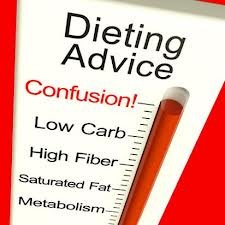Tips for Sticking to Your Weight Loss Routine
Written by Wendy Corr on January 20, 2017
It’s been a great week! I hope you’re paying more attention to what you put into your body, as well as the energy you’re putting out! What sort of activity are you doing? Are you getting enough steps in each day? 10,000 steps per day is the general recommendation. Go for a walk after your shift – go to the Rec Center. Go to a private gym and get on the treadmill. Do a home workout. Raise your heart rate!
As we head into the weekend, take a few minutes to read this summary of a Time Magazine article that offers advice on how to conquer cravings, stress-eating and other weight loss hurdles.
By Laura Schocker / Real Simple
If losing weight is kind of an abstract goal, identify your specific reason for wanting to drop pounds.
Robin Frutchey, a counselor and behavioral therapist for the Johns Hopkins Weight Management Center in Baltimore, says to find your motivation, create a list of reasons why you want to lose the weight, and the more specific, the better.
“Rather than saying, ‘I want to be healthy,’ write down, ‘I want to lose weight so I don’t have a heart attack like Dad,’” she says.
Another idea is to create a visual cue. Post the “before” picture of yourself in a bathing suit or at a family gathering and look at it when you’re tempted to stay in for another Netflix marathon instead of heading to the gym.
If you swear off your favorite foods but then drop out of the race because you can’t resist, adopt a diet plan that includes your cravings.
Deprivation can set you up for a binge: The moment your resolve is weakened, you’ll reach for the entire box of doughnuts. So instead of never eating your favorite food again, follow these rules for dessert: Eat it only after a meal, when you’re already pretty full. Eat a small portion, on a plate. Don’t sneak it. And enjoy it.
If you find yourself eating without even realizing it, set up your environment to make it easier to follow your plan.
Brian Wansink, PhD, director of the Cornell Food and Brand Lab in Ithaca, New York, and author of Slim by Design, says the average person makes about 200 food-related decisions a day, but our environment can push us to eat more. For example, faced with sugary cereal or bran flakes, you might choose the sugary cereal. A strategy to combat that is to straighten up your kitchen – an out-of-control environment primes you to say, ‘If the rest of the world is out of control, why try to control what I eat?’. Clutter also raises stress levels, and that can lead to overeating. And research reveals that people who kept fruit on their counters weighed 13 pounds less than their snack-displaying peers.
If you snack when you’re bored (or stressed, or lonely), eat only when you’re actually hungry.
Next time you find yourself absentmindedly poking around the kitchen for a snack, stop and ask whether your body really needs food. If it happens often, tack a sticky note that reads, “Am I hungry?” to the cupboard door or the fridge to stop you in your tracks. Or ask yourself, “Am I so hungry that I’d eat steamed broccoli?” Emotional hunger is usually for something specific, such as a carbohydrate or a sweet.
If you’ve identified that you’re feeling, well, a feeling and not physical hunger, come up with a list of three to five substitute behaviors for eating (brainstorm them now, when you aren’t hankering for a cookie). Find alternatives that will remove you from the situation, distract you, and hopefully make you feel good or productive.
If you start out with great intentions but, in the moment, really want the darn cupcake, then free yourself from the idea of willpower.
Willpower is an unreliable tool – you run out of it as the day progresses. You don’t need willpower; you need a new thinking pattern that you can put on autopilot. When it comes to weight loss, there’s a self-sabotaging rationale: “I’m too tired to cook” or “Everyone else is eating pizza. Why can’t I?” The key is to catch that thought and replace it.
If you stick to your diet except when you’re out with friends, strategize before you leave the house.
You don’t have to cancel all social events to see progress on the scale; you just need to plan ahead. Look at menus and decide what to order before you meet at the restaurant—since by then, you’ll be hungry and possibly influenced by what others are ordering.
If you’re prone to post-workout binges, focus on what fitness can do for your body rather than what it will allow you to eat later.
The average 155-pound person will burn about 300 calories during a half hour of running—and a post-gym milkshake cancels that out fast. Weight loss, after all, is about creating a calorie deficit.
If you abandon your diet as soon as you “mess up”, determine feel-good milestones that aren’t about the number on the scale.
A lot of factors go into weight—medication, hormones, genetics, and water retention, to name a few. At times, despite your best intentions, the scale might not budge (and it might even go up a pound or two). Don’t let it get you crazy—or make you quit trying. Ultimately, if you’re meeting your daily calorie and fitness goals, your weight will likely follow. Accept, too, that sometimes you might eat a cheeseburger. The experts agree: Stop beating yourself up about it. Think of it as just one of the 200 food decisions you’ve made today—then move on.
Have a fantastic, healthy weekend!
– Wendy Corr, Certified Holistic Nutritionist




